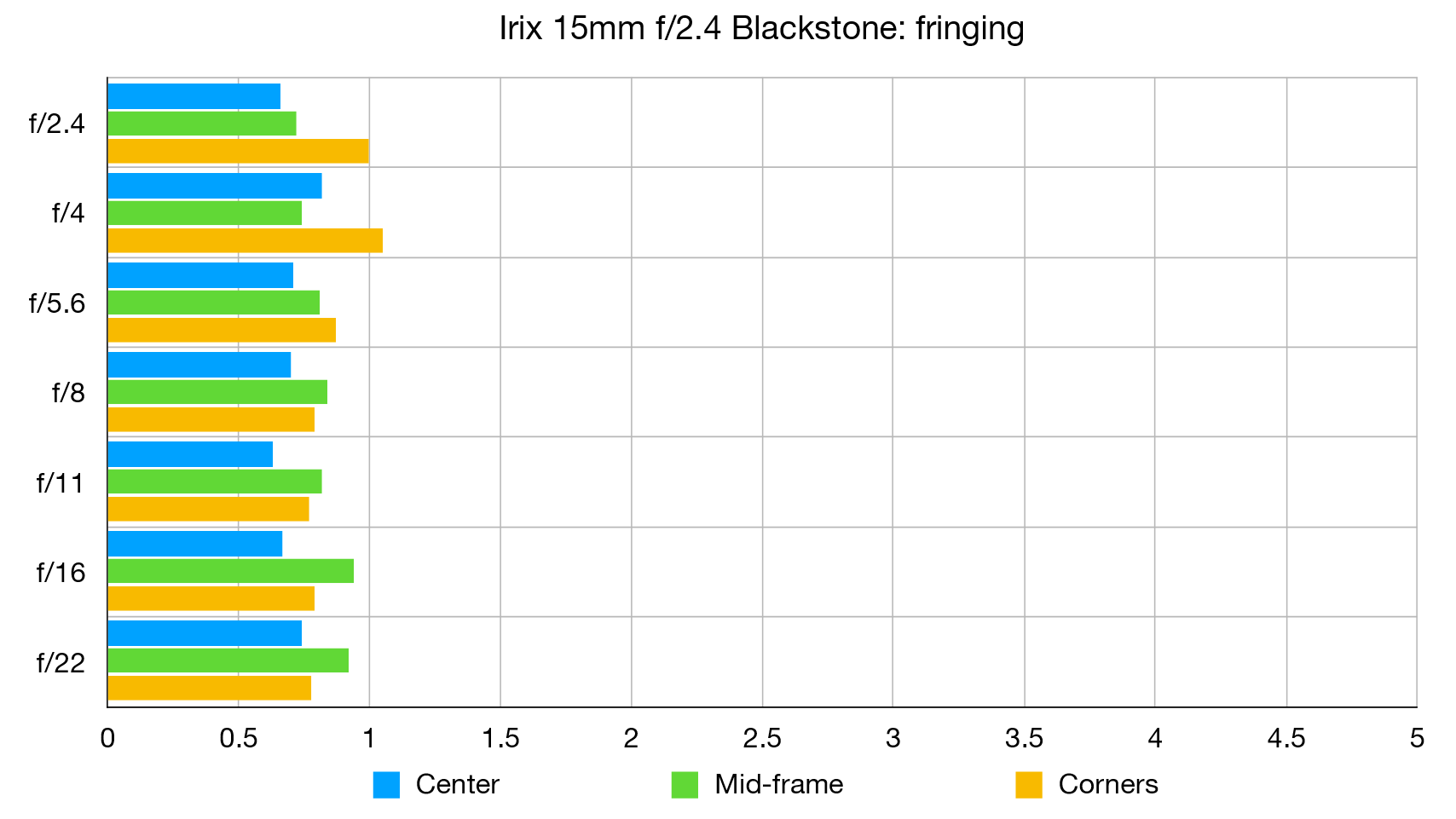Digital Camera World Verdict
This full-frame compatible manual-focus lens has excellent build quality, putting it ahead of the more inexpensive ‘Firefly’ version. The combination of a 15mm focal length and fairly fast f/2.4 aperture make it ideal for everything for shooting architectural interiors to sweeping landscape vistas and the night sky. Image quality and handling are very good, despite the lack of autofocus, making it a good buy at the price for Canon, Nikon and Pentax full-frame DSLRs.
Pros
- +
Very good image quality overall
- +
Refined handling
- +
Excellent build quality
Cons
- -
No autofocus
- -
Coma and astigmatism noticeable at f/2.4
Why you can trust Digital Camera World
The Irix 15mm f/2.4 is designed in Switzerland and built in Korea, and is available in Firefly and Blackstone options. They’re optically identical but the Blackstone has a magnesium alloy rather than plastic casing, four weather-seals instead of three, and fluorescent engraved markings for easy reading under very dull lighting. It’s also supplied in a hard case instead of a soft pouch.
Specifications
Mount: Canon EF, Nikon F, Pentax K
Full-frame: Yes
Autofocus: No
Stabilization: No
Lens construction: 15 elements in 11 groups
Angle of view: 110 degrees
Diaphragm blades: 9
Minimum aperture: f/22
Minimum focusing distance: 0.25m
Maximum magnification ratio: Unspecified
Filter size: 30x30mm rear slot
Dimensions: 114x100mm
Weight: 619-647g (mount dependent)
Key features
Unlike fully manual lenses, this manual-focus lens has built-in electronics that enable communication with the host camera. You can therefore control the aperture from the camera body and shoot without any limitations in the full range of PASM shooting modes, while also avoiding a dark viewfinder image in DSLRs at narrow aperture settings. Other bonuses are that the viewfinder’s focus assist/confirmation lamps are enabled, and lens-based EXIF data is recorded with images.
Typical of most manual-focus lenses, the focus control ring has a long rotational travel. Engraved markings are applied for both the hyperfocal distances and depth of field limits for apertures of f/8, f/11 and f/16. The latter is useful for ‘zone focusing’, enabling you to easily apply the range of distances that will be rendered sharply with in the scene.
The optical line-up includes three aspherical elements, two ED (Extra-low Dispersion) elements and four HR (High Refractive) elements, along with Irix’s proprietary ‘neutrino’ coatings to reduce ghosting and flare. Unlike some wide-angle lenses, the Irix comes with a separate hood which enables the inclusion of a filter thread at the front, although it’s rather large at 95mm. A gel filter slot is also included at the rear.

Performance
Sharpness is excellent across most of the image frame, even wide-open at f/2.4, and there’s fairly little vignetting as well. Color fringing and distortion are also quite minimal, and performance is good in terms of contrast and color rendition. The only real downside is that coma and astigmatism can be quite noticeable when shooting wide-open, which can give an irregular shape to stars when using the lens for astrophotography. Coma and astigmatism are much reduced when narrowing the aperture by an f/stop.
Lab results
We run a range of lab tests under controlled conditions, using the Imatest Master testing suite. Photos of test charts are taken across the range of apertures and zooms (where available), then analyzed for sharpness, distortion and chromatic aberrations.
We use Imatest SFR (spatial frequency response) charts and analysis software to plot lens resolution at the center of the image frame, corners and mid-point distances, across the range of aperture settings and, with zoom lenses, at four different focal lengths. The tests also measure distortion and color fringing (chromatic aberration).
Sharpness:

Center-sharpness is exceptional, even when shooting wide-open at f/2.4, but more average towards the edges and corners of the image frame.
Fringing:

Color fringing is minimal at the widest aperture and absolutely negligible when stopping down through the rest of the aperture range.
Distortion:
Barrel distortion is remarkably well controlled for such a wide-angle lens, the Irix returning a very good lab score.
Verdict
This full-frame compatible manual-focus lens has excellent build quality, putting it ahead of the more inexpensive ‘Firefly’ version. The combination of a 15mm focal length and fairly fast f/2.4 aperture make it ideal for everything for shooting architectural interiors to sweeping landscape vistas and the night sky. Image quality and handling are very good, despite the lack of autofocus, making it a good buy at the price for Canon, Nikon and Pentax full-frame DSLRs.
Read more:
• Best camera lenses to get
• Best Canon lenses
• Best Nikon lenses
• Best Sony lenses
Matthew Richards is a photographer and journalist who has spent years using and reviewing all manner of photo gear. He is Digital Camera World's principal lens reviewer – and has tested more primes and zooms than most people have had hot dinners!
His expertise with equipment doesn’t end there, though. He is also an encyclopedia when it comes to all manner of cameras, camera holsters and bags, flashguns, tripods and heads, printers, papers and inks, and just about anything imaging-related.
In an earlier life he was a broadcast engineer at the BBC, as well as a former editor of PC Guide.


